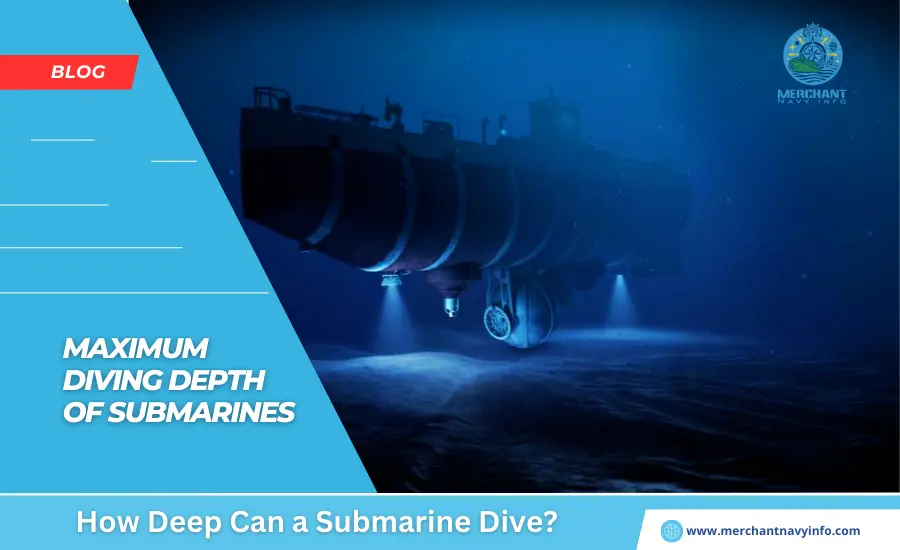
Recently, the global naval community was heartbroken by the KRI Nangara incident. After several days of search and also rescue operations. The remains of an Indonesian submarine were discovered at a depth of 838 meters. From what we learned, the submarine had a major failure in its submersible and also propulsion systems. Making it impossible to maneuver the boat to a safe depth. This incident aroused public curiosity about the diving limits of submarines. How deep can they dive? What maximum depth can a submarine withstand? Why are there such dive limits?
Submarine Hull Structure
Exact information regarding a submarine’s resistance to oceanic pressure is generally secret. But varies There is some open-source information regarding the design and testing. And also the maximum operational depth of various types of submarines. The resistance of a submarine to water pressure depends primarily on the material from which the submarine is constructed and also the capacity of the hull. Submarines cannot dive as deep as underwater research vessels. Underwater research vessels are designed for underwater navigation and exploration, while submarines are designed for a variety of purposes, including stealth, sound absorption, quietness, and maneuverability, and cost is also an important factor.
The submarine’s hull consists of two main components a lightweight hull and a pressure hull. The hull is the unique structure of a submarine that retains water within the submarine and helps the submarine maintain buoyancy underwater. The submarine’s lightweight hull is an outer, non-watertight hull that provides a hydrodynamically efficient shape. Lightweight hulls are usually constructed from thin steel plates, as they are subject to equal pressure on both sides. Inside the outer shell is a stable or pressure-resistant shell that can withstand external pressure, and the interior is maintained at normal atmospheric pressure. Pressure hulls are usually made of thick high-strength steel with a complex structure and high strength. Pressure and External Submarine Hull Basic Diagram (Source: Wiki) Carbon steel and titanium are also used in the construction of submarines. Although titanium is stealthy, the metal tends to be brittle and cannot be used for multiple dives.
Depth Terminology
Before talking about depth limits, it is a MUST to learn the related terminology.
Depth Rating
is a key design parameter and a measure of a submarine’s ability to navigate underwater. The strength of the hull limits the depth to which a submarine can go. If a problem occurs, it is important to know that there is a limit to how high the pressure can be inside a submarine. For example, oxygen becomes toxic at high pressure. Therefore, the pressure cannot be equalized.
Design Depth
is the nominal depth listed in the submarine’s specifications. Designers calculate the thickness of the hull metal, the displacement of the boat, and many other relevant factors. The actual depth of the vessel’s indentation should be slightly deeper than the design depth, as designers take into account errors in their calculations.
Test Depth
is the maximum depth to which a submarine can operate under normal peacetime conditions and is tested during sea trials. Test depth is for the US. Naval submarines set their test depths at two-thirds of the design depth, while the Royal Navy set their test depths at slightly less than half (4/7) the design depth, and the German Navy set their test depths at exactly half the design depth. Set.
Maximum Operational Depth
(commonly referred to as “excess depth”) is the maximum depth at which a submarine can operate in any situation (such as during combat).
Pressure Depth
formally known as collapse depth, is the depth at which a submarine’s hull collapses under pressure.
How Deep can Submarines Dive?
All submarines have a safe diving depth that they regularly reach for training purposes. The theoretical maximum diving depth is calculated by the engineers involved in the design and also the construction of the boat. It is theoretically possible to exceed this value as it incorporates factors that require attention. Additionally, the depth of the submarine cave-in would cause the boat to explode if exceeded. These limits can be determined, but unless there is an accident, we do not know what the exact depth of the pothole will be.
The age of the submarine’s hull and how far the submarine exceeds its maximum depth are other factors that affect the submarine’s durability. The lifespan of a submarine’s hull is estimated by the dive cycle, and each time the submarine dives and reaches depth, the lifespan of the hull decreases. If the test depth is too high, the life of the hull will be shortened. The rest depends on whether it is economical to keep the sub active. Submarines have several critical depth numbers, test depths, and diving depths that are expected to be achieved without adversely impacting operations. When testing and certifying subsea systems that are exposed to ocean pressure, the system is tested against this pressure.
Each submarine has its own maximum depth, X feet, which was achieved during the submarine class’s initial testing. For military submarines, the classification is “test depth” (the deepest depth a submarine can repeatedly reach). It is generally believed that the maximum depth (implosion depth or collapse depth) is approximately 1.5 to 2 times.
The Most known Depth Limits for Nuclear Submarines are
- Typhoon class: Test depth 900 m (3,000 ft)
- Institute class: Over 300 m (984 ft 3 in)
- Akula class: Test depth 480 m for Akula I and Akula I modified variants (1,570 ft), 520 m (1,710 ft) for Akula II and III, maximum operating depth 600 m (2,000 ft)
- Ohio Class: Test Depth >240 m (800 ft) + ft)
- Virginia Class : Test Depth > 240 m (800+ ft)
- Borei Class: Test Depth 950 m
- Rubis Class: Test Depth 350 m
- Barracuda Class: Test Depth > 350 m Los Angeles Class Attack Submarine










